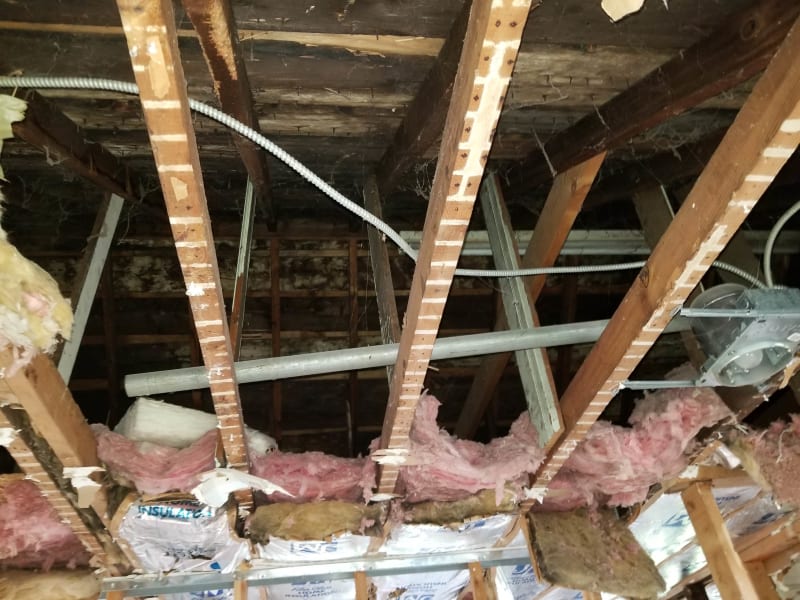mfstructural
Structural
- Feb 1, 2009
- 230
Hey everyone, I have a question regarding removing a bearing wall in a residence. There is a 6' long wall that the client wants to remove. There are 2x8 ceiling joists lapped and bearing on this wall. In addition, there is an opening adjacent to this wall where to facilitate walking between the kitchen and living room. There is a 2x8 beam bearing on the end of this wall. I know we can shore up the ceiling joists, and construct a header below the ceiling joists and opening. The issue with this is that the client wants to have a flush ceiling. So what I'm thinking of doing is shoring up the ceiling joists and adding posts that extend up past the top of the ceiling joists. Then, a beam will span between the two columns and the ceiling joists will be hung from the beam with a steel strap and/or orthogonal metal ties. Does anyone have any input or additional things I should consider?
It's a shallow roof with vertical 2x4s every 3 to 5 feet. I think because the vertical 2x4s are in place, vertical load from the ridge will be forced into going into the bearing wall below. I attached some pictures. Any input on that? The shallower the roof the more prone it is to spreading. So I think some tension is going into the ceiling joists/ties, but because of the vertical 2x4s and the shallowness of the roof, some loading from the roof rafters will go into the 2x4s. I will obviously have to design the header for the roof loading.
Thanks,

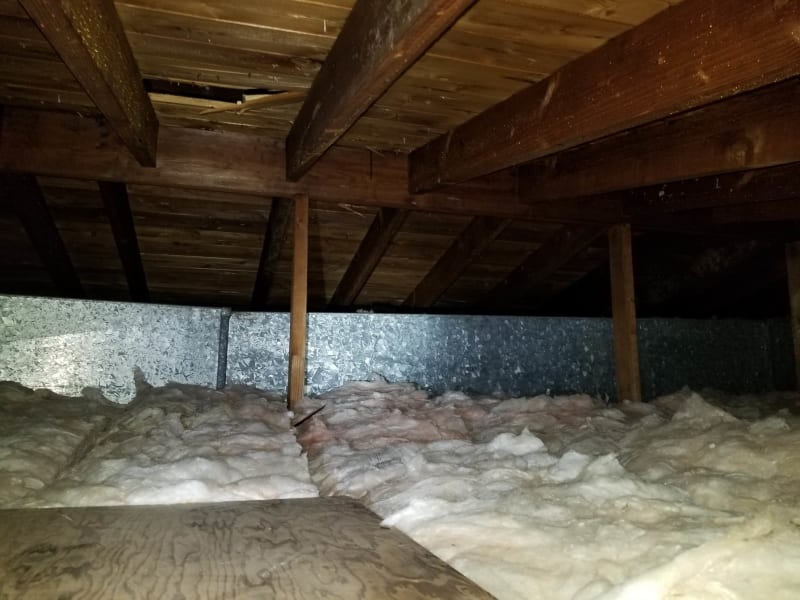
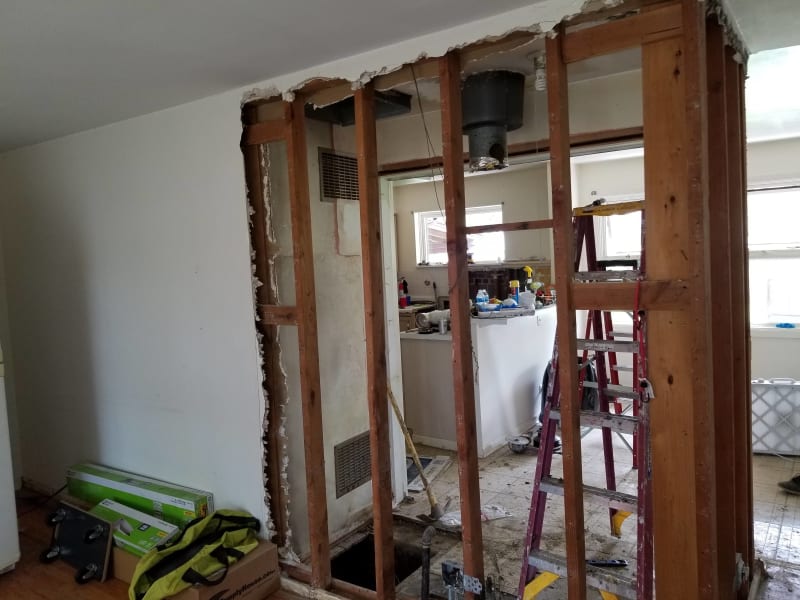
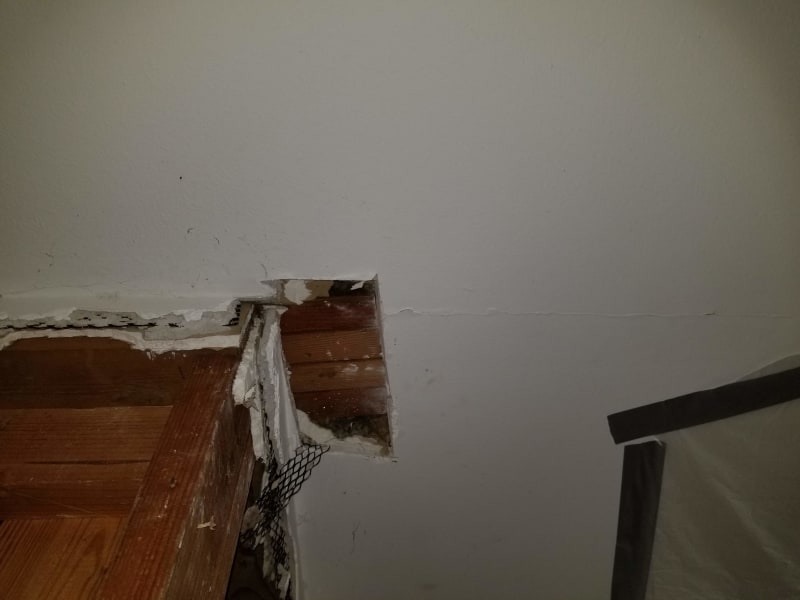
It's a shallow roof with vertical 2x4s every 3 to 5 feet. I think because the vertical 2x4s are in place, vertical load from the ridge will be forced into going into the bearing wall below. I attached some pictures. Any input on that? The shallower the roof the more prone it is to spreading. So I think some tension is going into the ceiling joists/ties, but because of the vertical 2x4s and the shallowness of the roof, some loading from the roof rafters will go into the 2x4s. I will obviously have to design the header for the roof loading.
Thanks,





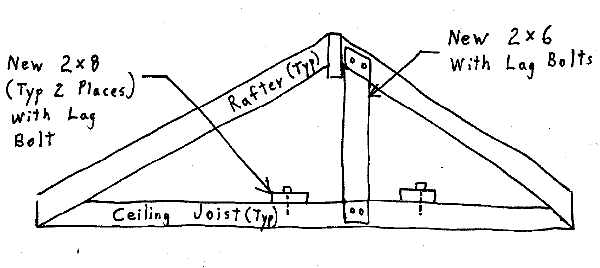
![[idea] [idea] [idea]](/data/assets/smilies/idea.gif)
